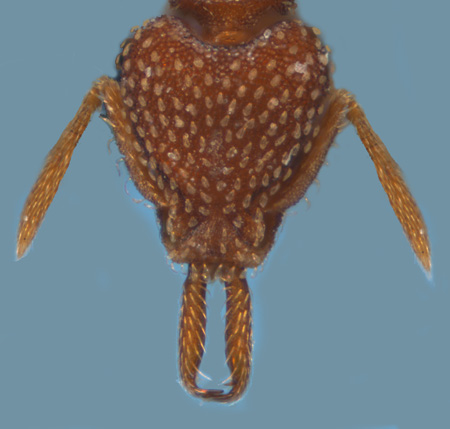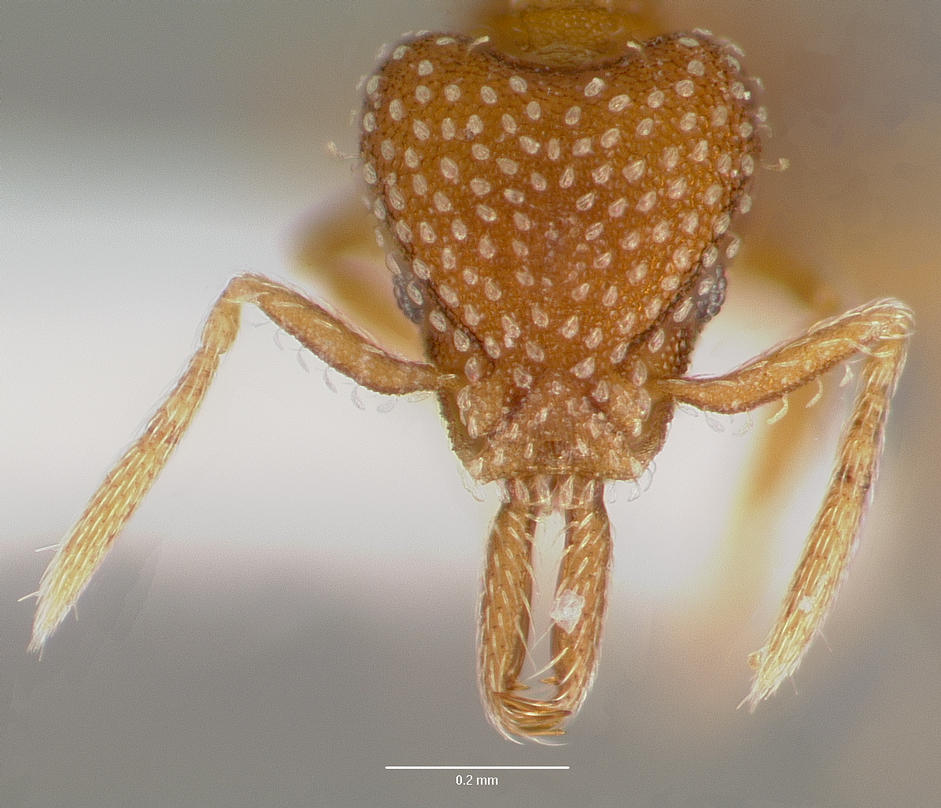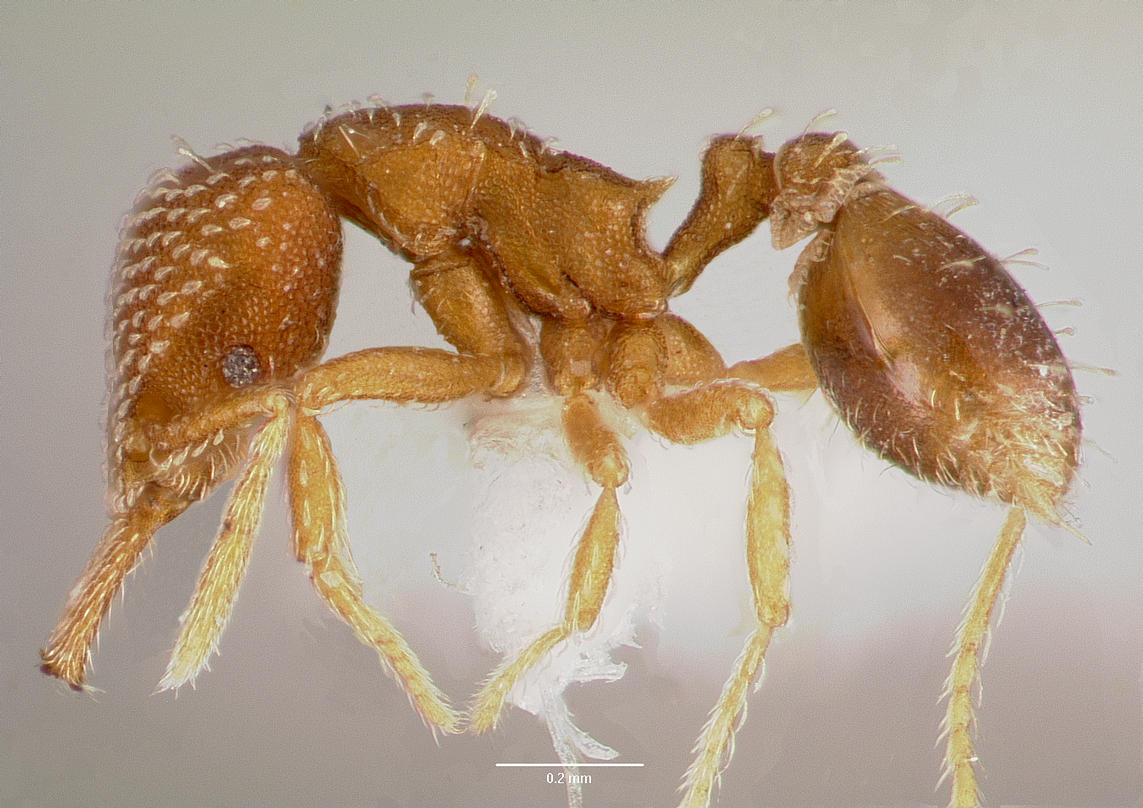Subfamily MYRMICINAE
Tribe ATTINI Strumigenys louisianae Roger |
 |
Strumigenys louisianae, full face view of worker |
Strumigenys louisianae, full face view of worker (click photo to enlarge). Photo courtesy of http://www.antweb.org/ |
Strumigenys louisianae, side view of worker (click photo to enlarge). Photo courtesy of http://www.antweb.org/ |
The genus Strumigenys is represented in the United States by only seven species, and six of these are believed to have been introduced. Our only native species, Strumigenys louisianae, is a very common and widespread species. Their colonies are small and nests are found in leaf litter, plant cavities, rotting wood, or under objects (Smith, D.R. 1979). Strumigenys are specialized hunters of collembola in the leaf litter and rotten logs. They hunt by stealth, as do Pyramica, but the sequence of prey capture is different. Strumigenys possess long, linear mandibles with a few large teeth at the apex. They wait for prey with their mandibles opened wide (at least 170°) and when prey encounters specialized hairs found on the ant's mouthparts, the long mandibles snap shut forcefully. This rapid and explosive strike is generally enough to kill the prey, and it is not necessary to sting the prey, as is the case with some species of Strumigenys. Strumigenys louisianae are small having a total length of only 1.3-2.5 mm. The mandibles are long, thin, and linear; with an apical fork of 2 or 3 spine-like teeth at the extreme tip. The antenna has 6 segments with the apical 2 segments forming a distinct club, and the apical segment often longer than the combined length of the other segments of the funniculus. Antennal scrobes are present, distinct, and extending above the eye. The head is subcordate with the posterior border strongly emarginate and posterior corners prominent and rounded. Spongiform tissue lacking on petiole, but present on postpetiole. |




